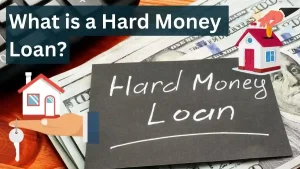Buying or owning a home is a dream for many and has a significant milestone in one’s life. But it is also one of the most expensive purchases you’ll ever make.
Home Loan is also known as a mortgage.
Not everyone is capable of buying a home with a hand full of cash. They will need a home loan or mortgage to fulfill the dream of owning a home. So, like many other people, you might be asking yourself how can I get approved for a mortgage or a home loan?

While the idea of homeownership is exciting, the process of getting approved for a home loan can be daunting.
Don’t worry; we’re here to guide you through it.
In this article, we’ll provide valuable tips for getting approved for a home loan to increase your chances of getting approved for that much-awaited home loan and buying the home of your dreams.
Understanding Home Loans: What is a Home Loan?
A home loan, also known as a mortgage, is a financial arrangement where a lender provides you with the funds to purchase a home, and you agree to pay back the loan over time, usually with interest.
It is a type of secured loan that allows you to borrow money to purchase a home. The loan is secured by the home itself as collateral. If you default on the loan, meaning if you fail to pay back the loan, the lender can foreclose (sell the house) to get their money back.
Tips for Getting Approved for a Home Loan
Here are a few of the steps to getting a home loan approved.
#1. Work on Improving Your Credit Score
Your credit score is one of the most important factors that lenders consider when approving a home loan application.
A good credit score shows lenders that you are a responsible borrower and that you are likely to repay your loan on time. So, it’s crucial to check your credit report and score regularly.
Ensure that your credit history is accurate and work on improving your score if needed.
How to improve your credit score for a home loan
There are a number of things you can do to improve your credit score, such as:
- Pay your bills on time and in full each month.
- Keep your credit utilization low. Credit utilization is the amount of credit you are using compared to the amount of credit you have available. It is generally recommended to keep your credit utilization below 30%.
- Pay down any outstanding debt.
- Avoid opening new credit accounts unless absolutely necessary.
Also Read: Tips for Getting Approved for a Personal Loan
#2. Get a Co-signer
If your income isn’t high enough to qualify for the home loan you’re applying for, consider getting a co-signer. A co-signer is someone who agrees to repay the loan if you default and you both are equally responsible for repaying the loan.
Your co-signer can be your spouse, your family members, or your trusted friends who are willing to give you a hand when needed.
When choosing a co-signer, choosing someone with good credit, a good employment history, and a steady income is important.
Imp Note: It would be best not to rely completely on your co-signer to make your monthly payments. They are there to appease the lender’s worry that you might be unable to make your payments. So, make sure you make up your mind that they are not there to make payments for you – unless you make a different arrangement with them.
#3. Shop Around for Lenders
Not all lenders are created equal, and their terms can vary significantly from one another. Don’t settle for the first lender you come across. Compare offers from multiple lenders before choosing the loan.
Shop around and obtain quotes from multiple lenders. You can use a home loan comparison website to compare rates and terms from different lenders. This allows you to compare interest rates, fees, and terms, ultimately helping you secure the best deal.
To find the best fit for your financial situation:
- Compare interest rates and loan terms from multiple lenders.
- Ask questions about fees, points, and closing costs.
- Seek recommendations from friends or family who have gone through the process.
RELATED: How to buy a house using a Mortgage?
#4. Compare Mortgage Rates and Loan Types
Once you make up your mind to get a Mortgage, start searching for the right kind of mortgage for your situation. When you’re buying a home, one of the most important decisions you’ll make is choosing the right mortgage.
There are many different types of mortgages available, and each has its own advantages and disadvantages. It’s important to compare mortgage rates and loan types to find the best option for your individual needs.
Here are a few things to keep in mind when comparing mortgage rates and loan types:
- Interest rate: The interest rate is the percentage of the loan amount that you’ll pay to the lender over time. A lower interest rate will save you money on your monthly mortgage payments and over the life of the loan.
- Loan term: The loan term is the length of time you have to repay the loan. Loan terms typically range from 15 to 30 years. A shorter loan term will have higher monthly payments, but you’ll pay off the loan sooner and save money on interest in the long run.
- Loan Type: There are many different types of mortgages available, including fixed-rate mortgages, adjustable-rate mortgages (ARMs), and government-backed loans. Each type of mortgage has its own unique features and benefits.
Types of Mortgages
Here is a brief overview of some of the most common types of mortgages:
- Fixed-rate mortgage: A fixed-rate mortgage has an interest rate that stays the same for the entire life of the loan. This type of mortgage is a good option for borrowers who want to have predictable monthly payments.
- Adjustable-rate mortgage (ARM): An ARM has an interest rate that can fluctuate over time. ARMs typically have lower starting interest rates than fixed-rate mortgages, but your monthly payments could go up in the future if interest rates rise.
- Government-backed loan: Government-backed loans are mortgages insured by the federal government. These loans typically have more flexible credit and income requirements than conventional mortgages.
#5. Prepare Necessary Documents
The loan application process involves a mountain of paperwork. You need to be ready with all the necessary documents. Being organized and having all the required documents ready can streamline the process. Typical documents include:
- Pay stubs or income verification.
- Bank statements.
- Tax returns.
- Proof of assets and liabilities.
6. Avoid Major Financial Changes
Before applying for a home loan, it’s wise to avoid making significant financial changes. Avoid taking some major changes like credit card loans or other loans during those times. Lenders may view recent changes as risky behavior.
- Don’t apply for new credit or credit cards (especially right before you apply for a mortgage since a hard inquiry will ding your credit score a few points temporarily).
- Don’t close any current open credit lines (especially right before you apply).
- Don’t Quit or change jobs (it looks risky).
- Avoid making large purchases on credit.
7. Seek Pre-Approval
Getting pre-approved for a home loan can give you a competitive edge in the housing market. Once you’ve settled on a lender, try to get pre-approved for a mortgage. With pre-approval, the lender will review your finances to determine if you’re eligible for funding and an amount they’re willing to lend you.
A pre-approval shows sellers that you’re a serious and qualified buyer, potentially leading to better negotiation opportunities. Also, getting a preapproval gives you the benefit as you’ll know exactly how much money you’re approved to borrow for the home.
Many sellers won't entertain offers from someone who hasn't already secured a preapproval.
Note: Preapproval doesn’t guarantee you’ll get the mortgage. That has to wait until you’ve made an offer on a house and successfully gone through mortgage underwriting.
Conclusion: Is Getting Approved for a Home Loan Easy?
Getting approved for a home loan can be a challenge, but it is definitely possible. By following the tips above, you can increase your chances of getting approved for a home loan and buying the home of your dreams. Remember to maintain a strong credit profile, assess your finances carefully, and choose the right mortgage that aligns with your goals. With determination and patience, you can turn your dream of owning a home into a reality.
How to Compare Mortgage rates and Loan types?
The best way to compare mortgage rates and loan types is to get quotes from multiple lenders. You can get quotes online, over the phone, or in person. Be sure to compare quotes from different types of lenders, including banks, credit unions, and mortgage brokers.
When you’re comparing mortgage rates and loan types, be sure to consider all of the factors involved, including the interest rate, loan term, loan type, and fees. It’s also important to choose a lender that you trust and that has a good reputation.
Key Takeaways
- Get pre-approved for a mortgage before you start shopping for a home. Pre-approval will give you an idea of how much money you can borrow and will make you more competitive with sellers.
- Shop around and compare rates from different lenders. Don’t just go with the first lender you talk to.
- Be honest and upfront with your lender about your financial situation. Don’t try to hide anything, as this could come back to bite you later.
- Be patient. The home-buying process can take some time, so don’t get discouraged if you don’t get approved for a home loan right away.



